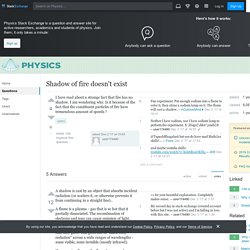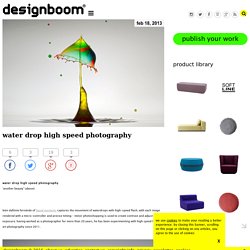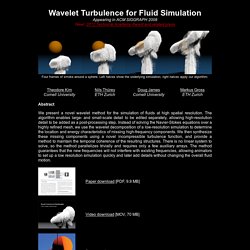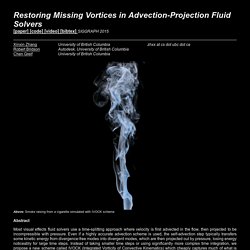FX Science
EXTREME VIDEOS HERE □さんはTwitterを使っています / Twitter. 【光学】シュリーレン法. Optics - Shadow of fire doesn't exist. A shadow is cast by an object that absorbs incident radiation (or scatters it, or otherwise prevents it from continuing in a straight line)..

A flame is a plasma - gas that is so hot that it partially dissociated. The recombination of electrons and ions can cause emission of light. Some flames (especially the yellow ones) also contain small particles (e.g. soot) that get so hot that they glow. This gives rise to "black body radiation" across a wide ranges of wavelengths - some visible, some invisible (mostly infrared). However, in all cases the flame has a very low density - it is mostly still a gas and nearly transparent. However, if you look at the "shadow" of a flame cast at a distance, you will definitely "something".
流体力学基礎. BEAUTIFUL MARS. Gullies and Craters and Dunes, Oh My!

This unnamed, approximately 30-kilometer diameter crater, formed in the Southern highlands of Mars. Our image shows regions of geologic diversity within, making this an interesting spot for scientists to study how different Martian processes interact with each other. Gullies, or channels formed by fluids such as water or lava, cut into the rim and sides of this crater. The presence of gullies can reveal clues about the ancient history of Mars, such as the amount of flowing fluid needed to form them and roughly how long ago that happened. This crater may also host features actively changing on the surface of Mars known as “recurring slope lineae” (RSL). Moving toward the crater floor, one can observe patterns indicative of dunes. HiRISE also captured a small, relatively fresh crater on the floor near the dunes. A Triple Crater This image shows an elongated depression from three merged craters.
Active Flows on Steep Slopes in Ganges Chasma. 銃弾をも砕くガラス「ルパートの滴」。ようやく仕組みを解明|ギズモード・ジャパン. Jupiter: Juno Perijove 06. Venezuelan artist Rafael Araujo. Water drop high speed photography. Feb 18, 2013 water drop high speed photography water drop high speed photography‘another beauty’ (above) león dafónte fernánde of liquid moments captures the movement of waterdrops with high-speed flash, with each image rendered with a micro-controller and precise timing – minor photoshopping is used to create contrast and adjust exposure. having worked as a photographer for more than 20 years, he has been experimenting with high speed liquid art photography since 2011.

‘another one’ the processsettings: the ideal ISO setting for the camera is ISO100 to ISO400 and an aperture of f14 to f18 in bulb modus. the bulb modus makes it necessary to have the room dimly lit or better still completely dark. the speed light flash guns are usually set to a power of 64 to 128. ‘ballerina – water drop photography’ ‘bunte krone’ the equipment:· nikon d5100 or nikon d800· 5 yn-560 flash· tamron 90mm f/2.8 macro lens· 4 x 12volt solenoid valve connected to a glimpsecatcher micro controller and a laptop ‘clown’
Wavelet Turbulence for Fluid Simulation. Abstract We present a novel wavelet method for the simulation of fluids at high spatial resolution.

The algorithm enables large- and small-scale detail to be edited separately, allowing high-resolution detail to be added as a post-processing step.
The Science Behind Hollywood Explosions. IVOCK. Abstract Most visual effects fluid solvers use a time-splitting approach where velocity is first advected in the flow, then projected to be incompressible with pressure.

Even if a highly accurate advection scheme is used, the self-advection step typically transfers some kinetic energy from divergence-free modes into divergent modes, which are then projected out by pressure, losing energy noticeably for large time steps. Instead of taking smaller time steps or using significantly more complex time integration, we propose a new scheme called IVOCK (Integrated Vorticity of Convective Kinematics) which cheaply captures much of what is lost in self-advection by identifying it as a violation of the vorticity equation. We measure vorticity on the grid before and after advection, taking into account vortex stretching, and use a cheap multigrid V-cycle approximation to a vector potential whose curl will correct the vorticity error.
Derek MSc Thesis. (続)水って丸い?四角い? CG の水はどっちもだった!(笑): 東京工科大学 メディア学部 ブログ. FLIP は 2005 年に Zhu と Bridson らによって発表された手法 [1] で,流体の運動を記述するナビエ・ストークス方程式に基づき,移流項と圧力項に分離して順々に計算します.

移流項の計算には粒子を使ってラグランジュ的に,圧力項の計算には格子を使ってオイラー的に解きます.したがって,移流項は流速値を持った粒子を流れに沿って移動させるだけで計算できる上,粒子の分布をそのまま液体表面の追跡として利用できるので,レベルセット法などの界面追跡法を別途導入する必要がありません.また,圧力項は格子法で離散化するので,完全な粒子法ですべてを計算する手法と比べて未知数の行列のバンド幅が小さく,高速に圧力場を求めることができます. いわば,「粒子(ラグランジュ)」と「格子(オイラー)」のいいとこ取りな手法ですね(笑). FLIP シミュレーションの流れを下図に示します.FLIP では,最初に圧力項を計算します.圧力項は,① 粒子の流速場を格子に転写し,② いったん格子上で圧力を計算します.粒子での圧力勾配は ③ 格子で計算された圧力の勾配を粒子位置で補間して求めます.移流項は圧力項のあとに ④ 粒子の位置で格子の流速を補間し,その流速に従って粒子位置を移動して計算します [2].
図.FLIP シミュレーションの概要 FLIP シミュレーションを実装した結果を,以下に示します(菊池研究室での実装結果です). 映像:FLIP シミュレーションの例(菊池研での実装) FLIP そのものは,1980 年代の CFD(Computational Fluid Dynamics 数値流体力学)分野において,おもに密度が変化するようなダイナミックな流体の動きを算出する手法として活用されていました.それを 2000 年代中盤に CG 分野でも応用するようになり,現在の流体シミュレーションの代表的な手法のひとつとなっています(ただし,FLIP にも欠点はあることを断っておきます). このように,異分野で活用されている手法を新しい分野でも改良・拡張しながら利用していくということは,意外と珍しいことではありません. これからの研究者には,広く様々な領域に目を向け,日々勉強を続けながら精進していくことが求められます. 参考文献 文責:菊池 司. 早稲田大学 鉱床学研究室 - Waseda University Minerogenesis Laboratory -
Pdf file50ab034ea493f.






